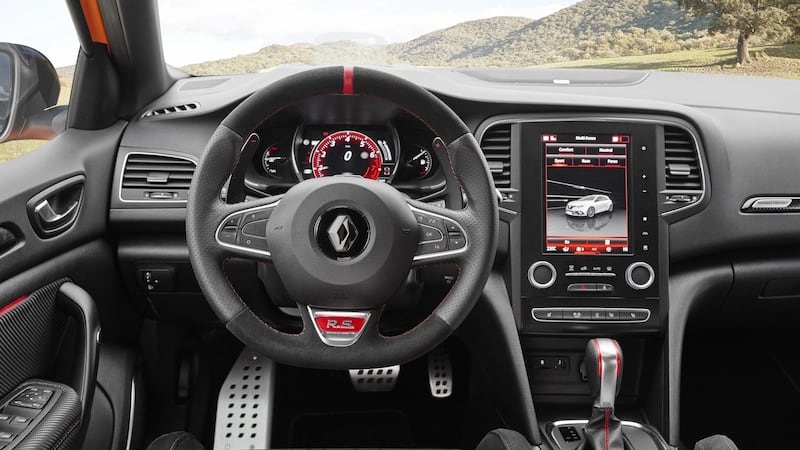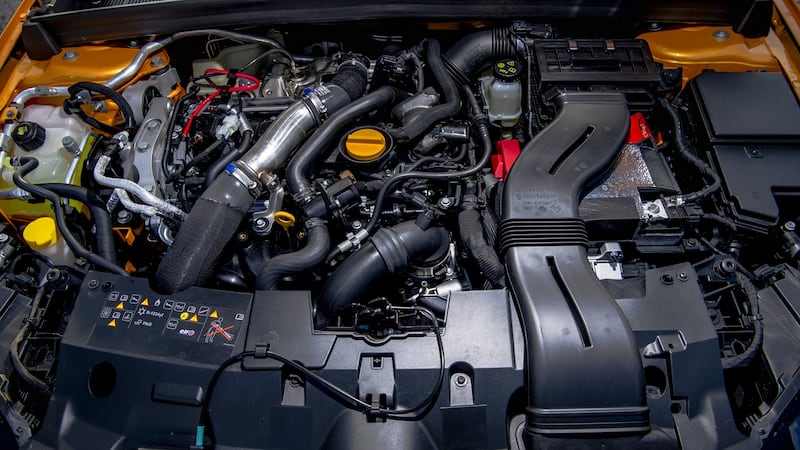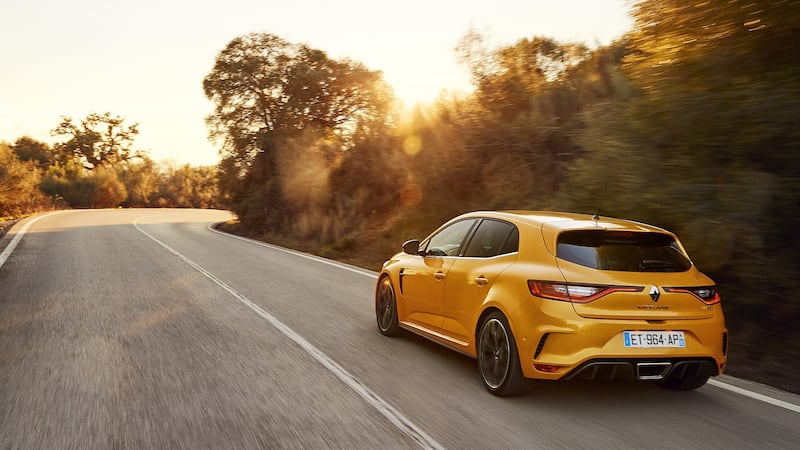The concept of a traffic-free road is fast becoming an alien one. Thanks to the majesties of ribbon development and planning laws that don’t actually plan very much, it’s very hard to find any road, even a distant country boreen, in Ireland that is actually bereft of other users.
Here though, there’s no-one. The road, which twists almost cruelly between rock faces, concrete crash barrier blocks, and trees looks like all the best tarmac stages from Colin McRae Rally on the PlayStation. Looping up and over a stark range of mountains in a national park, the road is a circular loop that begins and ends at the one-time home of the European Grand Prix, the Jerez De La Frontera race track in the south west of Spain.
Jerez this may be, but there's no time for Sherry now, vicar; we've got a hot Renault to test. The current edition of the Renault Megane is a decent enough family hatchback - good looking, roomy, comfortable, frugal - but lacking in anything you might call excitement. Renault's Renault Sport division, though, has more than a little form when it comes to making the most thrilling possible hot hatches out of middle-ground family cars. The last Megane RS GT model was a stripped-out road rocket that, on the right road and in the right hands, could be Porsche-fast.
Agility is all
That is avowedly not the point of the new Megane RS, though. More power it might have (280hp now, up from the old model’s 265hp) but Renault’s senior engineers avow that what they wanted to create was not the fastest hot hatch around (clearly, with a 70hp disadvantage to the likes of the Ford Focus RS that was never going to happen) but the most agile, the most fun, and the most enjoyable.
So, the spanners were broken out and the Megane’s chassis given a thorough going over. The front suspension was modified with a new hub that allows the wheels to turn independently of the front dampers and springs, and the four-wheel steering system (called 4Control) was parachuted in from the Megane GT model, albeit modified to a more aggressive setting.

The steering was upped in terms of both feel and weight, but the most important modification was the addition of hydraulic bump stops for the suspension. Thanks to these, the Megane’s undercarriage is much, much better at dealing with poorly surfaced roads, allowing a very clever mix of soft overall springing and damping, but with firmer responses the harder you push and the more you load up the suspension. It’s a massive, night-and-day change from the standard Megane, and the gives the RS a distinct advantage over many harder-sprung rivals.
Steering feel
Spanish roads are, of course, relatively smooth but we still found sufficiently scarred and mottled sections to put the new suspension to the test, and it’s pretty much excellent. Loaf around at low speeds and it actually floats a little, but the harder you go the better it gets.
The steering has brilliant weighting and a sense of totally proportional response, but feel a feedback are a little distant. That doesn’t matter so much, though, because the RS has a chassis so talented that it makes the absolute best of any instructions you give it. Aside from a touch of torque steer when accelerating hard, this is a car that works wonderfully with you, never giving into sudden snaps or unruly behaviour. Thanks to those relatively soft springs, you glide across most surfaces, and the excellent grip, and the extra agility bestowed by the four-wheel steering make the Megane enormously enjoyable. The way this thing grips and gets around a tight hairpin has to be experienced.

The engine is a new 1.8-litre unit, developed for the Megane in tandem with the new Alpine A110 sports car. 280hp is a decent power output, but it must be said that many rivals (Golf R, Leon Cupra, Civic Type-R) are well ahead of it in power terms. The 390Nm torque figure is no more than you’d get from a good 2.0-litre diesel, either, so the Megane is not over-endowed with grunt.
Thankfully, the chassis lets you make the most of it as you can carry big speed with huge confidence, and never feel as if things are getting away from you. The EDC dual-clutch gearbox can be a touch slow-witted in automatic mode, but it comes alive once you select Sport mode and start taking care of the changes yourself, and it sends an entertaining burping noise back up to the cockpit on fast upchanges.
Track laps
We did get a brief couple of on-track laps in a manual-gearbox version, with the lower, firmer Cup chassis option which also includes a Torsen front differential but without an on-road test of the Cup, it’s hard to draw any meaningful comparisons. It was fast, stable, enjoyable on track but the manual shift is rather heavy and long, so I think you’d actually be better off with the EDC for real-world driving, Helpfully, the EDC also keeps you, just, in Tax Band C.
Renault will doubtless sell very few Megane RS in Ireland, probably fewer than ten or so. When asked if the whole RS brand, and Renault’s storied motor racing history, was a big player in Irish customers’ view of the marque, the response was a weary “I wish…” Price will certainly be a serious impediment. Likely to be pegged at around €45,000, it’s more expensive than the Golf GTI, but not really sufficiently faster to justify the extra outlay.
That’s a shame, as this is a car that deserves a wider audience. It’s not the fastest nor the most furious, but rather like the VW Golf GTI and Golf R (it more or less splits the performance difference between those two cars) it’s enormously good fun to drive, but comfortable and useable enough (great seats, by the way) to use every day without pain. Yes, even in traffic.

The lowdown: Renault Megane RS Sport EDC
Price: Circa €45,000 (TBC).
Power: 280hp.
Torque: 390Nm.
0-100kmh: 5.8 seconds
Top speed: 250kmh.
Claimed economy: 40.9mpg (6.9 litres/100km).
CO2 emissions: 155g/km.
Motor tax: €390
Verdict: A wonderfully judged chassis turns the Megane from also-ran into one of the best (if rather pricey) hot hatches around.
Our rating: 4/5









